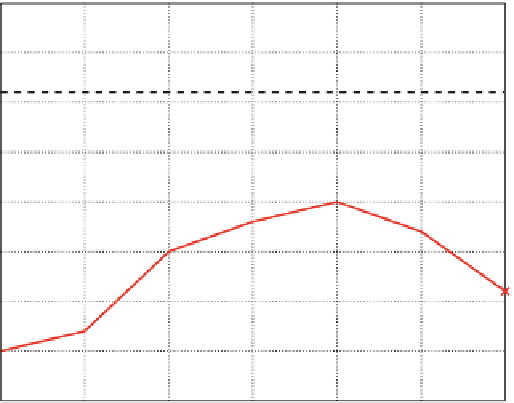Information Technology Reference
In-Depth Information
with the dropout technique. Further, in order to check whether pre-training helps
to combat overfitting we trained two sets of networks, one with and one without
pre-training. In all cases, the weights were initialized with values sampled from a
uniform distribution in the range
"
s
s
#
6
N
in
N
out
; C4
6
N
in
N
out
4
;
(19.26)
where
N
in
is the number of input units and
N
out
the number of output units.
The networks were trained on the training set using standard SGD with momen-
tum and early stopping determined on the development set. As the cost function
we used cross entropy (CE) for the classification task and the mean squared error
(MSE) for the regression task. As soon as the cost function started to raise on the
development set the training was stopped.
Figure
19.5
shows the best test set results obtained on the regression task for
different network sizes.
Several conclusions can be drawn from this figure: first, the ReLu networks out-
perform the sigmoid networks for all hidden layer sizes, except for small networks
with hidden unit sizes
< 512
. This might be due to the strong regularization effect
of dropout that surmounts the regularization effect of pre-training. Second, pre-
training helps in all cases, regardless of whether sigmoid units or rectified linear
83.5
baseline
relu & dropout (no pretrain)
relu & dropout (pretrain)
sigmoid (pretrain)
sigmoid (no pretrain)
83
82.5
82
81.5
81
80.5
80
79.5
128
256
512
1024
2048
3072
4096
# hidden units
Fig. 19.5
Regression task: test set results based on the baseline feature set I for a one-hidden layer
MLP for varying hidden layer sizes. Shown are the graphs for networks trained with rectified linear
units and dropout vs. sigmoid hidden units and with vs. without pre-training the networks

































































































Search WWH ::

Custom Search